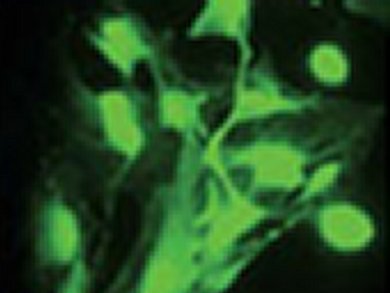Tau protein aggregates and amyloid plaques are hallmarks of Alzheimer disease. Amyloid β, the plaques’s main component, consists of different isoforms, such as Aβ42 peptides and amino-terminally truncated, pyroglutamylated ones. The latter exhibit the highest neuronal toxicity and aggregation kinetic.
The mechanism underlying these unique properties has been revealed by Justin M. Nussbaum, University of Virginia, USA, and colleagues. The researchers have shown that Aβ3(pE)-42, the most abundant pyroglutamylated amyloid β isoform, interacts with an excess of Aβ42 peptides to form metastable oligomers which induce Aβ42 misfolding with a prion-like mechanism, thus causing gliosis and neuronal loss. These processes occur in a tau protein dependent manner: mice hyper producing Aβ3(pE)-42 but lacking tau were protected from neuronal cytotoxicity. Identified in brain extracts of patient affected by Alzheimer, Aβ3(pE)-42–Aβ42 oligomers, might be an important trigger of the human disease.
- Prion-like behaviour and tau-dependent cytotoxicity of pyroglutamylated amyloid-β,
J.M. Nussbaum, S. Schilling, H. Cynis, A. Silva, E. Swanson, T. Wangsanut, K. Tayler, B. Wiltgen, A. Hatami, R. Rönicke, K. Reymann, B. Hutter-Paie, A. Alexandru, W. Jagla, S. Graubner, C.G. Glabe, H.U. Demuth, G.S. Bloom.
Nature 2012, 485 (7400), 651–655.
DOI: 10.1038/nature11060




